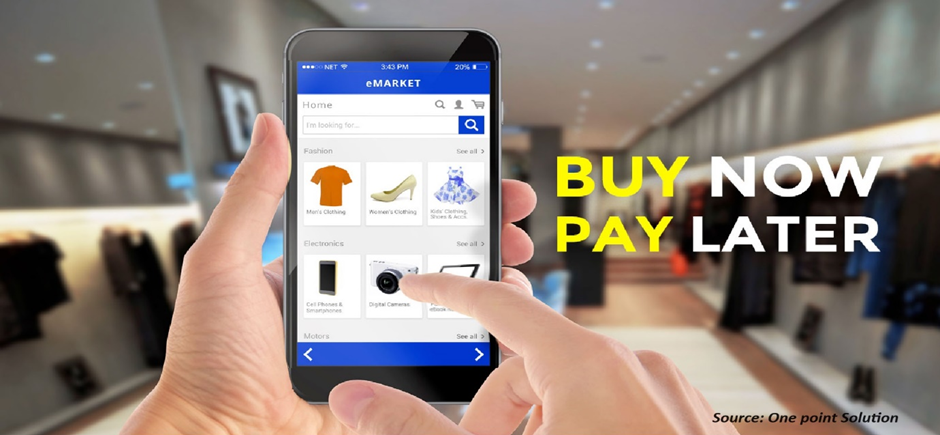
Middle East Mobile Payment Market by Age (Generation Z, Millennials, Generation X, and Baby Boomers), by Payment Type (Proximity and Remote), and by Application (Money Transfers, Merchandise Purchases, Bill Payments, Airtime Top-ups, Ticketing, and Others) – Opportunity Analysis and Industry Forecast, 2024–2030
Industry: ICT & Media | Publish Date: 01-Sep-2024 | No of Pages: 111 | No. of Tables: 79 | No. of Figures: 44 | Format: PDF | Report Code : IC2493
Middle East Mobile Payment Market Overview
The Middle East Mobile Payment Market size was valued at USD 1.17 billion in 2023, and is predicted to reach USD 5.76 billion by 2030, with a CAGR of 24.2% from 2024 to 2030. The mobile payment system, also known as money transfer, mobile money, m-payments, electronic payments, and digital payments, enables financial transactions through mobile devices such as smartphones, tablets, and wearables. These transactions are facilitated through mobile apps or various methods such as proximity and remote transactions. Mobile payment systems encompass diverse types such as mobile wallets, mobile banking apps, and online payment services such as PayPal, Venmo, and Google Pay.
Utilizing technologies such as SMS, near-field communication (NFC), quick response (QR) codes, and others, these systems ensure seamless transactions while implementing robust security measures including encryption and biometric authentication to safeguard personal and financial data. Embraced for their convenience, speed, security, and integration with other financial tools, mobile payment systems find widespread adoption. Moreover, users can configure payment apps to automatically settle bills, such as utility or credit card bills, ensuring efficient financial management and averting late payments.
Rise of Cross-Border Transactions Drives the Middle East Mobile Payment Market
The rise of cross-border transactions serves as a significant driver of market growth in the mobile payment industry in the country. As globalization accelerates, businesses and individuals engage in international trade, commerce, and remittances at an unprecedented scale.
Mobile payment solutions offer a convenient, cost-effective, and efficient way to conduct cross-border transactions, facilitating seamless money transfers and payments across borders. With mobile payment platforms increasingly supporting multi-currency transactions and offering competitive exchange rates, users can transfer funds internationally with ease, bypassing traditional banking intermediaries and their associated fees and delays.
Moreover, the integration of innovative technologies such as blockchain enhances the security, transparency, and speed of cross-border payments, further driving adoption. As cross-border transactions continue to grow in volume and complexity, mobile payment providers stand to benefit from expanding their global reach, driving the mobile payment market growth and fostering financial inclusion on a global scale.
Shift Towards Cashless Societies Propels the Middle East Mobile Payment Market
The shift towards cashless societies is a significant catalyst for the Middle East mobile payment market expansion. As societies worldwide increasingly embrace digitalization and convenience, cashless payments have emerged as the preferred method for transactions. Mobile payment solutions offer consumers and businesses a seamless and efficient alternative to cash, enabling secure and contactless transactions using smartphones or other mobile devices.
The convenience, speed, and hygiene benefits of cashless payments have been particularly highlighted amid global events such as the COVID-19 pandemic, driving further adoption. Additionally, governments and regulatory bodies are actively promoting cashless economies to combat issues such as tax evasion, money laundering, and the underground economy. As a result, the growing acceptance and adoption of cashless payment methods propel the market growth for mobile payment solutions, providing opportunities for innovation, expansion, and financial inclusion.
Resistance from Traditional Financial Institutions Restrains the Middle East Mobile Payment Market Growth
Resistance from traditional financial institutions represents a significant barrier to the Middle East mobile payment market growth. Established banks and financial entities may view mobile payment solutions as disruptive to their existing business models, leading to reluctance in supporting or promoting these innovative technologies. This resistance stems from concerns about potential revenue cannibalization, regulatory complexities, and the perceived threat of losing control over payment infrastructures.
As a result, traditional financial institutions may hesitate to invest in mobile payment initiatives or collaborate with fintech startups and mobile payment providers, hindering the development and adoption of innovative payment solutions. Overcoming this resistance requires collaboration, regulatory alignment, and education to demonstrate the benefits of mobile payments for both financial institutions and consumers, thus unlocking the full potential of the Middle East mobile payment market.
The Rise of Voice-Activated Mobile Payments Creates Opportunities in the Middle East Mobile Payment Market
The rise of voice-activated mobile payments presents exciting opportunities in the Middle East mobile payment market. Voice-activated payment systems enable users to initiate transactions and perform banking tasks using natural language commands, leveraging virtual assistants such as Amazon Alexa or Google Assistant.
This technology offers unparalleled convenience, allowing users to make payments hands-free and on-the-go. Voice-activated mobile payments streamline the payment process, enhancing user experience and accessibility for individuals with disabilities or limited mobility.
Additionally, voice-activated payments open up new possibilities for integration with smart home devices, wearable technology, and IoT ecosystems, expanding the reach and utility of mobile payment solutions. As voice technology continues to advance, the integration of voice-activated mobile payments into everyday life presents promising opportunities for innovation, differentiation, and market growth.
Competitive Landscape
Various key market players operating in the Middle East mobile payment industry include Alphabet, Inc. (Google), Alibaba Group Holdings Limited, Amazon.com, Inc., Apple, Inc., PayPal Holdings, Inc., Visa, Inc., Tencent Holdings Limited (WeChat), MasterCard International, Inc., Samsung Electronics Co. Ltd., Block, Inc., and others. These key players have adopted various strategies to strengthen their market share.
Middle East Mobile Payment Market Key Segments
By Age
-
Generation Z
-
Millennials
-
Generation X
-
Baby Boomers
By Payment Type
-
Proximity
-
Near-Field Communication (NFC)
-
Quick Response (QR) Code Payments
-
-
Remote
-
Internet Payments
-
SMS/Direct Carrier Billing
-
By Application
-
Money Transfers
-
Merchandise Purchases
-
Bill Payments
-
Airtime Top-ups
-
Ticketing
-
Others
REPORT SCOPE AND SEGMENTATION:
|
Parameters |
Details |
|
Market Size in 2023 |
USD 1.17 Billion |
|
Revenue Forecast in 2030 |
USD 5.76 Billion |
|
Growth Rate |
CAGR of 24.2% from 2024 to 2030 |
|
Analysis Period |
2023–2030 |
|
Base Year Considered |
2023 |
|
Forecast Period |
2024–2030 |
|
Market Size Estimation |
Billion (USD) |
|
Growth Factors |
|
|
Companies Profiled |
10 |
|
Market Share |
Available for 10 companies |
|
Customization Scope |
Free customization (equivalent up to 80 working hours of analysts) after purchase. Addition or alteration to country, regional, and segment scope. |
|
Pricing and Purchase Options |
Avail customized purchase options to meet your exact research needs. |
KEY PLAYERS
-
Alphabet, Inc. (Google)
-
Alibaba Group Holdings Limited
-
Amazon.com, Inc.
-
Apple, Inc.
-
PayPal Holdings, Inc.
-
Visa, Inc.
-
Tencent Holdings Limited (WeChat)
-
MasterCard International, Inc.
-
Samsung Electronics Co. Ltd.
-
Block, Inc.




 Speak to Our Analyst
Speak to Our Analyst

































